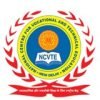
Bangalore Institute of Safety & Technology
An ISO 9001:2015 & ISO 45001:2018 Certified Training Institute
Affiliated by VTU Gov of Karnataka, Affiliated by NCVTE, Regional Skill Development.





- info@bist.co.in
- 91 9606206655
A-Z Index
A
The Advanced Diploma in Fire & Industrial Safety Management by the National Council for Vocational Training in Environment (NCVTE) is designed to create skilled professionals capable of managing fire safety systems and emergency protocols in high-risk industrial environments.
Asbestos refers to a group of fibrous minerals used to strengthen and fireproof materials. Asbestos will be used in the products includes building materials, floor tiles, insulation for pipes, ships, and in vehicles such as brakes, clutches. During the removal of asbestos materials or during manufacturing the workers are likely to exposed when inhaled over a long period of time and cause diseases such as mesothelioma, lung cancer and asbestosis. Asbestos is recognized as health hazards and its use is highly regulated by both OSHA and EPA.
Investigating a worksite incident- a fatality, injury, illness, or close call- provides employers and workers the opportunity to identify hazards in their operations and shortcomings in their safety and health programs. Most importantly, it enables employers and workers to identify and implement the corrective actions necessary to prevent future incidents. Incident investigations that focus on identifying and correcting root causes, not on finding fault or blame, also improve workplace morale and increase productivity, by demonstrating an employer’s commitment to a safe and healthful workplace.
B
Behavior-based safety is the “application of science of behavior change to real world safety problems”. or “A process that creates a safety partnership between management and employees that continually focuses people’s attentions and actions on theirs, and others, daily safety behavior.
C
Chemical safety is achieved by undertaking all activities involving chemicals in such a way as to ensure the safety of human health and the environment .Among these are toxicology, ecotoxicology and the process of chemical risk assessment which requires a detailed knowledge of exposure and biological effects.
Many workplaces contain areas that are considered “confined spaces” because while they are not necessarily designed for people, they are large enough for workers to enter and perform certain jobs. A confined space also has limited or restricted means for entry or exit and is not designed for continuous occupancy. Confined spaces include, but are not limited to, tanks, vessels, silos, storage bins, hoppers, vaults, pits, manholes, tunnels, equipment housings, ductwork, pipelines, etc.
Construction is a high hazard industry that comprises a wide range of activities involving construction, alteration, and/or repair. Construction workers engage in many activities that may expose them to serious hazards, such as falling from rooftops, unguarded machinery, being struck by heavy construction equipment, electrocutions, silica dust, and asbestos.
D
Disaster management refers to the conservation of lives and property during natural or man-made disasters. Disaster management plans are multi-layered and are planned to address issues such as floods, hurricanes, fires, mass failure of utilities, rapid spread of disease and droughts.
Defensive driving is a form of training for vehicle drivers that makes them aware about the driving rules, standard driving practices and the required driving mechanics. Its main objective is to reduce the risk of driving by anticipating hazardous situations, adverse conditions or the driving errors of others.
E
Electricity has long been recognized as a serious workplace hazard. OSHA’s electrical standards are designed to protect employees exposed to dangers such as electric shock, electrocution, fires, and explosions. Includes references that provide information related to electrical in construction including OSHA’s electrical construction regulations, hazard recognition, possible solutions, and additional resources.
The primary focus of the Emergency Response rule would be to protect workers who respond to emergencies as part of their regularly assigned duties. Examples include fire brigades/workplace emergency response teams, industrial and municipal firefighters, technical rescuers, emergency medical service providers, etc. A secondary focus of the rule would be to protect those workers who may be called upon, from time to time, to respond to emergencies. Examples include skilled support workers such as heavy equipment and crane operators, heavy wrecker/rotator operators, etc.
Workers in many different industries and occupations can be exposed to risk factors at work, such as lifting heavy items, bending, reaching overhead, pushing and pulling heavy loads, working in awkward body postures, and performing the same or similar tasks repetitively. Implementing an ergonomic process is effective in reducing the risk of developing musculoskeletal disorders( MSDs) in high-risk industries as diverse as construction, food processing, firefighting, office jobs, healthcare, transportation, and warehousing.
Excavation and trenching are some of the most hazardous tasks in construction. Open excavations in the Earth’s surface can cave in unexpectedly, causing injury or death if the proper protective systems are not in place. This
F
It is a requirement of OSHA that employees be given a safe and healthy workplace that is reasonably free of occupational hazards. However, it is unrealistic to expect accidents not to happen. Therefore, employers are required to provide medical and first aid personnel and supplies commensurate with the hazards of the workplace.
Working at height is any work on, below, or above ground level where there is a risk of personal injury through falling and risks to people below the work site being injured by falling objects. The best strategy for protecting workers from falls is to eliminate the hazards that cause them. When you can’t eliminate the hazards, you must protect workers with an appropriate fall-protection system or method.
Food safety refers to routines in the preparation, handling and storage of food meant to prevent foodborne illness and injury. … Safe food handling practices and procedures are thus implemented at every stage of the food production life cycle in order to curb these risks and prevent harm to consumers.
Fire safety training provides employee with knowledge they need to prevent a fire from occurring as well as how to react to a fire. This training can mean the difference between life and death in the event of a fire at workplace.
H
H2S and SO2 is a highly toxic and flammable gas. … H2S Awareness explains the properties of H2S, identifies control measures and provides a practical description of what to do in the event of exposure.
It is an interactive, online, game-based training tool for small business owners, workers and others interested in learning the core concepts of hazard identification. After training, users will better understand the process to identify hazards in their own workplace.
Heat emergencies are health crises caused by exposure to hot weather and sun. Heat emergencies have three stages: heat cramps, heat exhaustion, and heatstroke. All three stages of heat emergency are serious.
I
Industrial hazard may be defined as any condition produced by industries that may cause injury or death to personnel or loss of product or property. Safety in simple terms means freedom from the occurrence of risk or injury or loss.
J
A job hazard analysis is a technique that focuses on job tasks as a way to identify hazards before they occur. It focuses on the relationship between the worker, the task, the tools, and the work environment.
K
keeping your kitchen accident free as you cut, chop, slice, dice, mince, mix or perform other kitchen related duties. Following kitchen safety rules can help prevent accidents that might lead to: PAIN AND DISCOMFORT: from cuts, bumps, bruises, burns and more serious mishaps.
L
“Lifting tackle” means any chain sling, rope sling, hook, shackle, swivel, coupling, socket, clamp, tray or similar appliance, whether fixed or movable, used in connection with the raising or lowering of persons, or loads by use of lifting machines.
A Logistics Safety Audit is an independent verification process of the whole process of in-bound and out-bound logistics system of an organisation. The essential components may include: Journey Risk Management issues like. Vehicle Safety. Journey Safety, Road Safety and Route Safety.
M
Manual materials handling (MMH) means moving or handling things by lifting, lowering, pushing, pulling, carrying, holding, or restraining. MMH is also the most common cause of occupational fatigue, low back pain and lower back injuries.
This course is designed to increase the crane operator’s knowledge, skill and proficiency level through classroom and hands-on training. Students can achieve qualified operator status by successfully completing written and hands-on segments.
Mobile Elevating Work Platforms (MEWPs) can provide temporary elevated workspaces as an alternative to ladders or scaffolding. Due to the potential hazards of working at height, the American National Standards Institute (ANSI) and Canadian Standards Association (CSA) have developed standards related to MEWP design, construction, and use. This course covers the 2018 ANSI A92 and CSA B354 standards for MEWP operators and occupants. It covers MEWP Group and Type designations, as well as MEWP design, use, and training requirements.
In simple understanding, mock drill is a practice as how to save life in real time situation of any kind of danger calamity that occurs with no advance or very little time to evacuate from place!! Mostly helps when Earthquake, Sudden Fire or Building Collapse.
N
NEBOSH abbreviated as National Examination Board in Occupational Health and Safety from united Kingdom(UK).
We provide NEBOSH IGC(International General Certificate) and HSW(Health Safety at Work).
Highly recognized and respected qualifications globally. Perfect for EHS professionals, Managers, Supervisors, freshers, entry level.
Helps you “know and do” effective Health and Safety measures.
Nitrogen is used daily in the workplace without incident. However, serious incidents including fatalities can occur when nitrogen is present in a work environment, such as a confined space, and employees enter without awareness of the potential hazard. This course will teach you how to recognize hazards and take corrective action to protect yourself and others.
NDT stands for Non-Destructive Testing. It refers to an array of inspection methods that allow inspectors to evaluate and collect data about a material, system, or component without permanently altering it. NDT training courses give you a comprehensive understanding of the processes where tests are conducted on a component without destroying the item or its structure.
O
Occupational health is a multidisciplinary activity aimed at the protection and promotion of the health of workers by preventing and controlling occupational diseases and accidents and by eliminating the occupational factors and conditional hazardous to health and safe at work.
Workplace safety training is a process that aims to provide your workforce with knowledge and skills to perform their work in a way that is safe for them and their co-workers. In addition, an effective workplace safety plan includes instructions and guidelines to identify hazards, report them, and deal with incidents.
This Program provides supervision, employees and safety managers with general safety rules, task safety procedures and best techniques for installation of quality fiber optic cable systems (cable handling, splicing, pulling, terminating testing and trouble shooting tasks).
P
The Post Graduate Diploma in Industrial Safety and Management (PGDISM) is a deep dive into advanced safety management principles, combining technical expertise with leadership skills.
The Post Graduate Certificate in Industrial Safety and Management (PGCISM) is a specialized program designed to provide foundational knowledge and practical skills in industrial safety.
Personal protective equipment is protective clothing, helmets, goggles, or other garments or equipment designed to protect the wearer’s body from injury or infection. The hazards addressed by protective equipment include physical, electrical, heat, chemicals, biohazards, and airborne particulate matter.
Health and safety orientation is a vital component of any company’s health and safety management system. It is the process of introducing new, inexperienced, transferred and returning employees to a safe and healthy workplace.
R
Working with ionizing radiation sources presents many safety issues. Organizations must ensure radiation levels remain low and are compliant with regulations. To achieve this, all members of staff must understand the risks involved with working with radiation sources and how to manage these potential risks.
Training in risk management is a vital part of any organization’s health and safety policy. In many cases, it is also required by Health and Safety Regulations for those working with or near radiation sources.
These activities range from working at a height for repair or maintenance to inspection and access related tasks. It is being used in various industries such as oil, gas, petrochemical, infrastructure, construction and renewable energy.
S
Let qualified workers do the job, train your workers to the peaks to perform the job in a right way with full safety.
In order to make sure equipment and environment is safe, qualified professional perform risk analysis to reduce the potential hazards, unsafe acts, and unsafe condition.
“School Safety” has been defined as creating safe environment for children, starting from their homes to their schools and back. This includes safety from any kind of abuse, violence, psycho-social issue, disaster: natural and manmade, fire, transportation.
A safe and healthy workplace not only protects workers and customers from injury and illness, but it can also lower injury/illness costs, reduce absenteeism and turnover, increase productivity and quality, and raise employee morale and customer trust.
The anchors specified to tie a scaffold to a structure are suitable for the base material and that they are installed correctly. Scaffold anchors or ties are installed as erection work progresses. … Scaffolds are not overloaded with equipment, especially tube and fittings, during erections or dismantling operations.
T
A Toolbox Talk is an informal group discussion that focuses on a particular safety issue. These tools can be used daily to promote department safety culture as well as to facilitate health and safety discussions on job sites.
W
Warehousing work activities create numerous health and safety risks. … Safety measures must protect workers from warehouse hazards and ensure that they can carry out work activities safely. You should also focus on promoting thorough warehouse safety procedures for reasons beyond compliance.
Welding safety measures are designed to protect employees from welding hazards. Welding safety can be implemented by conducting proper training, inspecting welding equipment, and ensuring workers are aware of safety precautions before performing welding activities to minimize the risk of health and safety injuries.
Work at height means working in a place (except a staircase in a permanent workplace) where a person could be injured by falling from it, even if it is at or below ground level.
Working at Height Rescue training With advance planning, user-friendly escape & rescue equipment and procedures after a fall can save lives. This training helps you develop a plan to ensure the safest operation possible for the benefit of your workers working at height.